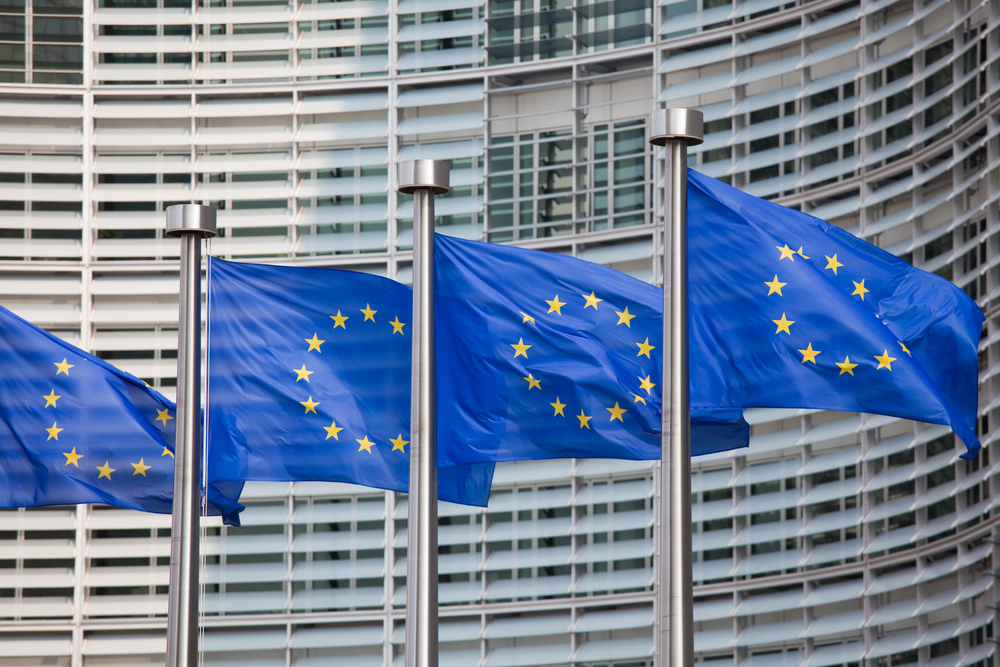ECB Optimistic About Achieving 2% Inflation Target by 2025
13.03.2025 18:00 2 min. read Alexander Stefanov
Тhe European Central Bank (ECB) is optimistic about bringing Eurozone inflation down to its 2% target by the end of 2025, despite ongoing economic challenges.
Joachim Nagel, ECB Governing Council member and Bundesbank president, recently spoke with the BBC, expressing confidence that inflation would stabilize this year, with a target date now set for 2025. This positive outlook follows a drop in energy prices, which could speed up the inflation slowdown.
While the ECB previously expected inflation to fall to 2% by early 2026, the recent energy price reductions may bring that forecast forward. However, there are significant risks to the Eurozone economy, particularly due to trade uncertainties. Nagel specifically pointed out how Germany’s export-heavy economy could suffer from rising tariffs, notably from U.S. trade policies under Donald Trump, which could increase the chance of a recession.
Nagel also encouraged European leaders to make the most of the current moment to push for more infrastructure and military investments, suggesting that the European Union should focus on expanding rather than retreating.
In a similar vein, Martins Kazaks, another ECB policymaker, voiced caution, noting that global market uncertainty complicates predictions about future interest rates. The looming threat of a trade conflict, especially regarding tariffs, continues to affect inflation expectations.
Recent Eurostat data revealed that inflation in February was slightly higher than expected, at 2.4%. While energy prices slowed their rise significantly, core inflation fell to 2.6%, showing that the trend toward stabilization is underway. Nonetheless, the path ahead remains uncertain, as fluctuations in global markets, particularly energy prices and geopolitical tensions, could impact future inflation trends.
Despite the positive signs in some countries, such as France’s sharp decline in inflation to 0.9%, other areas like Germany saw little change. With a still-complex inflation landscape, the ECB faces continued challenges in shaping policy that will bring the Eurozone back to sustained price stability.
-
1
China Quietly Advances Yuan as Dollar Alternatives Gain Ground
20.05.2025 17:00 2 min. read -
2
Economic Instability and Political Shift Fueling Bitcoin’s Rise – Galaxy Digital CEO
23.05.2025 12:00 2 min. read -
3
Trump Renews Attack on Fed Chair, Calls for Immediate Rate Cuts
18.05.2025 8:00 1 min. read -
4
Japan’s Inflation Hits 3.5% as Food Prices Soar and Tariff Risks Loom
23.05.2025 21:00 1 min. read -
5
US Dollar Dominance Under Threat Amid Yuan’s Global Ambitions
22.05.2025 14:00 2 min. read
Tariffs Threaten to Stall U.S. Growth in 2025, Recovery Not Expected Until 2026
The U.S. economy may be closer to a downturn than many realize, according to Jay Bryson, chief economist at Wells Fargo.
Dollar Faces Deep Decline as Fed Cuts Pressure Currency, Warns Morgan Stanley
Morgan Stanley has issued a cautionary outlook on the U.S. dollar, predicting a major decline over the coming year as Federal Reserve rate cuts take hold.
Trillions in Debt Payments Could Break U.S. Economy, Ray Dalio Predicts
Legendary investor Ray Dalio has issued a stark warning about the trajectory of U.S. government finances, suggesting the country is drifting toward a series of severe economic shocks unless its debt spiral is urgently addressed.
Wall Street Veteran Warns Tariffs Could Disrupt AI-Driven Market Rally
Steve Eisman, the famed investor known for forecasting the 2008 housing collapse, is sounding the alarm—not on overvalued tech stocks or interest rates, but on the escalating risk of global trade disputes.
-
1
China Quietly Advances Yuan as Dollar Alternatives Gain Ground
20.05.2025 17:00 2 min. read -
2
Economic Instability and Political Shift Fueling Bitcoin’s Rise – Galaxy Digital CEO
23.05.2025 12:00 2 min. read -
3
Trump Renews Attack on Fed Chair, Calls for Immediate Rate Cuts
18.05.2025 8:00 1 min. read -
4
Japan’s Inflation Hits 3.5% as Food Prices Soar and Tariff Risks Loom
23.05.2025 21:00 1 min. read -
5
US Dollar Dominance Under Threat Amid Yuan’s Global Ambitions
22.05.2025 14:00 2 min. read


